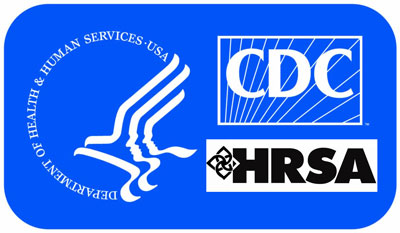HRSA & CDC Announce New Autism Data
March 20, 2013

|
The report, "Changes in Prevalence of Parent-Reported Autism Spectrum Disorder in School-Aged Children: 2007 to 2011-2012," estimates autism spectrum disorder (ASD) prevalence based on parental reporting using the National Survey of Children's Health (NSCH), a national sample of families across the country, and was released by the Health Resources and Services Administration (HRSA) and the Centers for Disease Control and Prevention, (CDC) agencies within the Department of Health and Human Services (HHS).
The survey was funded by HRSA and the data collection was conducted by the National Center for Health Statistics (NCHS) of CDC. The data come from the National Survey of Children's Health, a nationally-representative phone survey of households with children. This survey is conducted every four years. This new report from a survey of parents helps us understand what parents are experiencing.
Main Findings
- The prevalence of parent-reported ASD among children aged 6-17 years was 2 percent in 2011-2012 compared to 1.2 percent in 2007.
- The change in prevalence estimates was greatest for boys and for adolescents aged 14 to 17 years.
- Much of the increase in the prevalence estimates from 2007 to 2011-2012 for school-aged children was the result of diagnoses of children with previously unrecognized ASD.
Last year, CDC's Autism and Developmental Disabilities Monitoring (ADDM) Network estimated that 1 in 88 children had been identified with autism spectrum disorder (ASD). These estimates from the ADDM Network are based on data collected from health and special education records of children living in 14 areas of the United States during 2008. These 14 communities comprised over eight percent of the United States population of 8-year-olds in 2008. You can read the latest ADDM Network community report here (pdf). To read the scientific article, click here.
Together, the NCHS report and ADDM Network data help to provide a more complete picture of ASD prevalence. While this report, based on a national survey of parent experiences, can provide insight into the prevalence of autism, the ADDM Network works with communities to further enrich our understanding - collecting information on why certain groups of children are more likely to be identified with autism than others, when children are likely to be identified, and what progress is being made to identify children earlier. The next CDC report on ASD prevalence from the ADDM Network is expected to be published in 2014. CDC will continue to update its ASD prevalence estimates based on findings from the ADDM Network.
More Information
For more information about CDC's autism activities, visit www.cdc.gov/autism. For free resources and tools to help parents and professionals track every child's early developmental milestones and to know how and when to take action on developmental delay, visit CDC's "Learn the Signs. Act Early." program Web site: www.cdc.gov/actearly.
For information about HRSA's autism efforts visit http://mchb.hrsa.gov/programs/autism/index.html.







